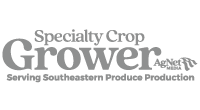
Growers in the cold-hardy citrus region are applying too much nitrogen to their groves.
Muhammad Shahid, assistant professor of horticulture at the University of Florida Institute of Food and Agricultural Sciences (UF/IFAS), discovered that unfortunate reality while conducting a research project in North Florida.
Most citrus growers were following recommendations in the UF/IFAS Florida Citrus Production Guide, which are mostly not applicable in the cold-hardy citrus region.
Shahid says the soil type is highly clay in North Florida, South Georgia and southeastern Alabama. It has good organic matter and more nutrient- and water-holding capacity. When he surveyed the cold-hardy region’s growers about fertilizer rates, he realized they were using too much nitrogen.
“Some are adding 200, 230 or 250 pounds per acre,” reported Shahid. “They said they were following the guidelines in the citrus guide. That’s the only available source for them.”
Shahid explained that those guidelines were written for sandy soils, HLB-infected trees and varieties grown for processing. Those recommendations do apply in the cold-hardy region because the soil and climate are different, varieties are grown for the fresh market, and HLB occurrence is very low.
According to Shahid, sandy soils easily leach out nutrients and water. “That’s the reason we increase application frequency and application rates,” he said. “Opposite to this are the cold-hardy soil types which have more nutrient- and water-holding capacity. The nutrients stay longer in the root zone. That’s the reason we need lower rates and less application frequency. At minimum, we can reduce about 20% to 30% of fertilizer use in this region. We should not be adding more than 170 to 175 pounds per acre.”
Share this Post
Sponsored Content










